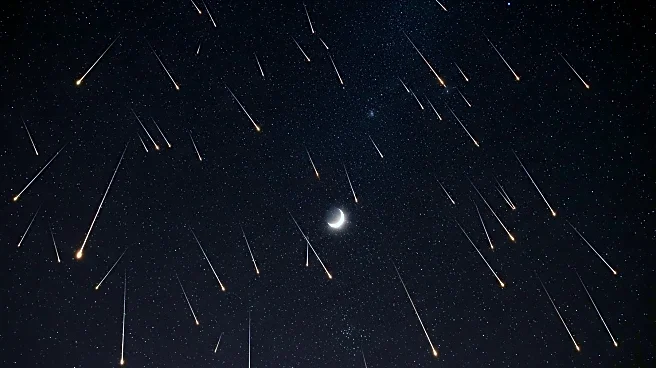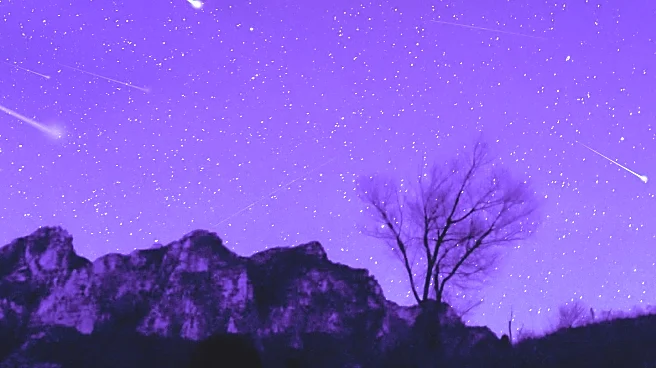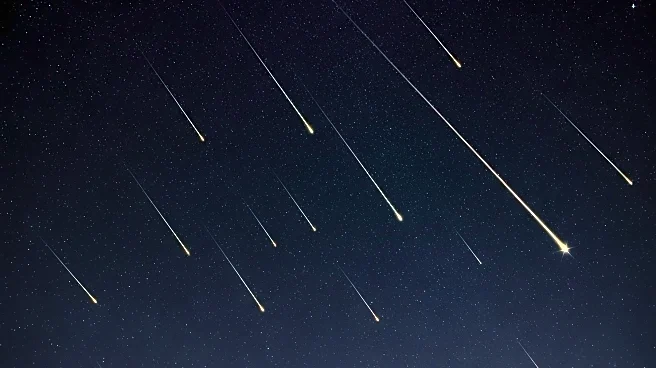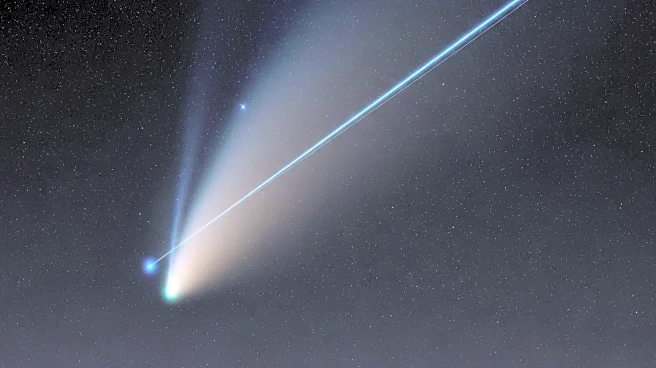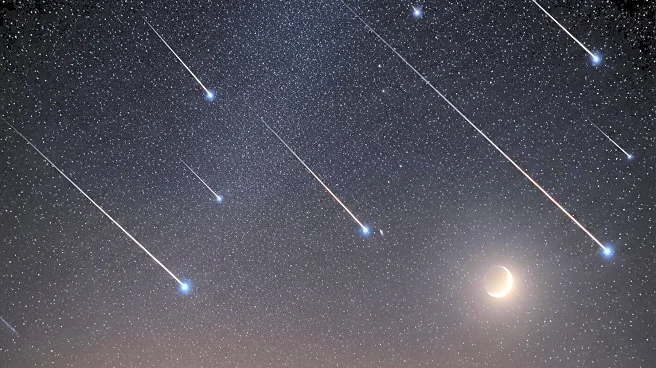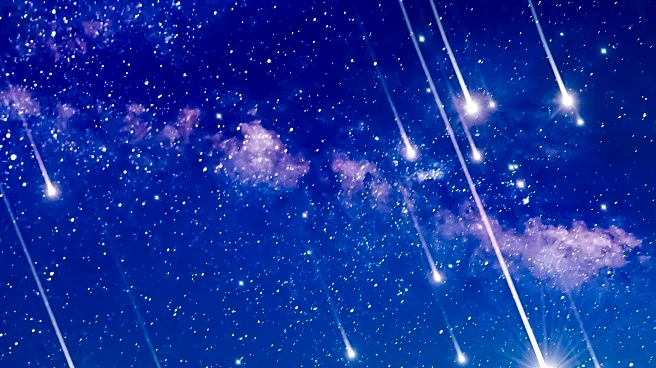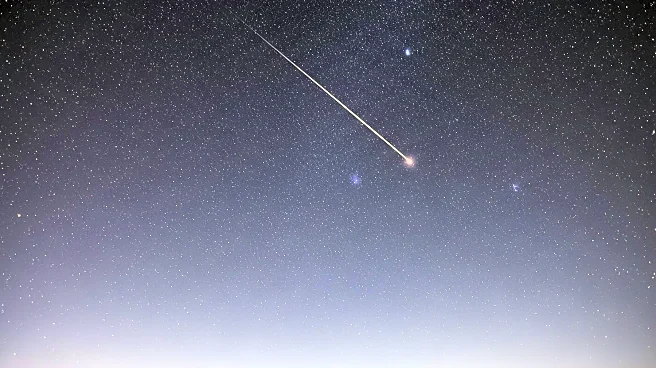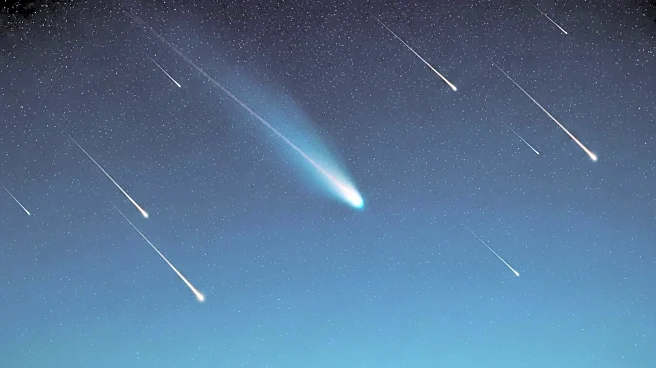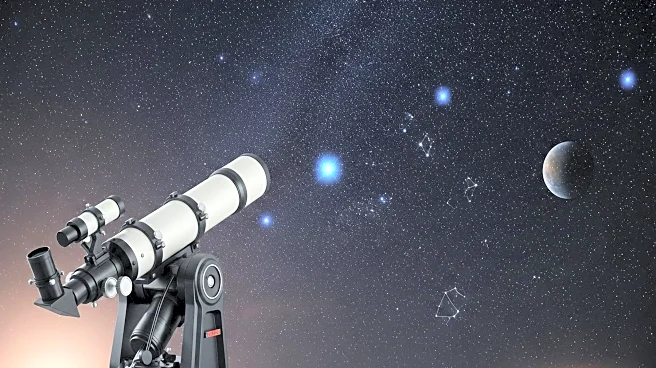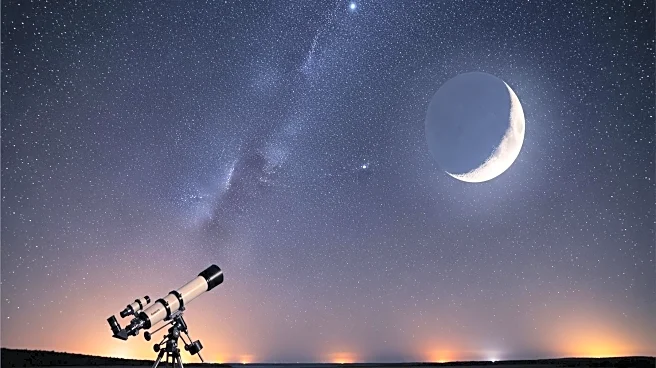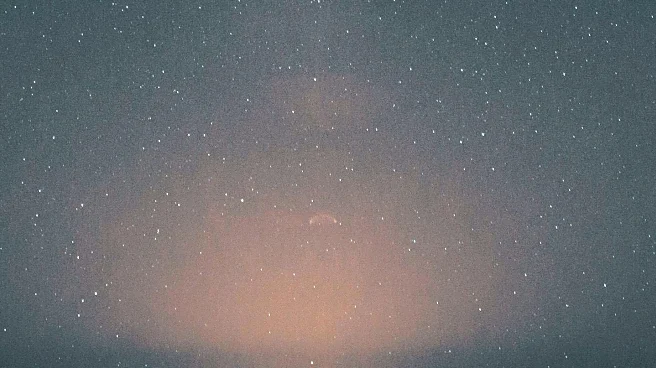What's Happening?
The Orionid meteor shower is set to peak overnight on October 20-21, offering a spectacular display of 'shooting stars' in a moonless sky. The shower occurs as Earth passes through debris from Halley's Comet, with meteors traveling at speeds of 41 miles per second. During peak activity, observers can expect to see 10-20 meteors per hour, with the radiant located in the constellation Orion. The shower is known for its fast-moving meteors and glowing trails, providing an impressive celestial show.
Why It's Important?
The Orionid meteor shower provides an opportunity for the public to engage with astronomy and witness a natural celestial event. Such events can inspire interest in science and space exploration, highlighting the dynamic nature of our solar system. The shower's visibility in a dark sky enhances the viewing experience, allowing observers to appreciate the beauty and complexity of meteor showers. This event also emphasizes the importance of public engagement in science, fostering curiosity and appreciation for the universe.
What's Next?
Observers are encouraged to find dark locations away from city lights to maximize their viewing experience. The best time to view the Orionids is in the predawn hours of October 21, when the radiant is high above the southern horizon. Observers can use star charts to locate the radiant and enhance their chances of seeing meteors. The shower's peak offers a unique opportunity to capture images of meteors and engage with the night sky.
Beyond the Headlines
The Orionid meteor shower highlights the ongoing interactions between Earth and celestial debris, offering insights into the behavior of comets and meteors. The event serves as a reminder of the vastness of space and the continuous movement of cosmic objects. It also underscores the importance of public engagement in science, fostering curiosity and appreciation for the universe.
